June 9, 2025 | 08:08 GMT +7
June 9, 2025 | 08:08 GMT +7
Hotline: 0913.378.918
June 9, 2025 | 08:08 GMT +7
Hotline: 0913.378.918
In Binh Dinh, pioneering in implementing the policy of developing large timber forests, are the 3 enterprises operating in the forestry sector, including Song Kon Forestry Company Limited, Ha Thanh Forestry Company Limited and Quy Nhon Forestry Company Limited. In addition, in recent years, many enterprises outside the province have also returned to Binh Dinh to cooperate with afforestation households to convert small timber plantations into large timber forests. Similarly, many afforestation households in Binh Dinh are also aware of the benefits of large timber forests, so they have gradually transformed forests.
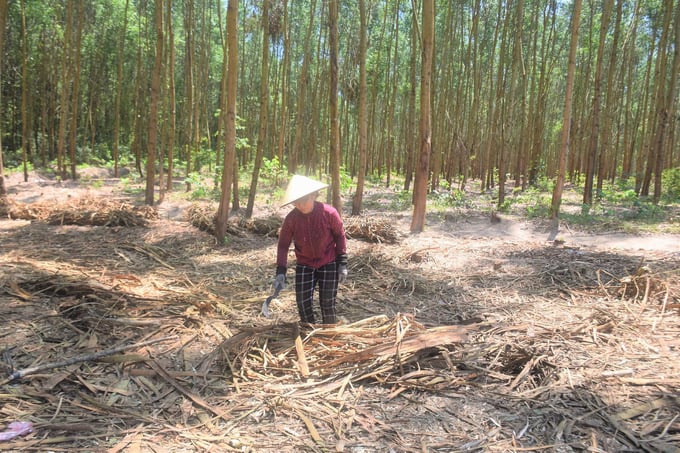
The 5-year-old forest of Song Kon Forestry Co., Ltd. has just been thinned to grow large timber forests. Photo: V.D.T.
Up to now, Binh Dinh has 3,175 ha of large timber forests, striving to increase to 4,450 ha by the end of this year, aiming for 10,000 ha in 2025 and 30,000 ha in 2035. Recently, the People's Committee of An Lao district (Binh Dinh) has registered with the Binh Dinh Department of Agriculture and Rural Development a plan to plant 1,000 ha of large timber forest in the period of 2023 - 2025. This includes mixed crops like acacia hybrid and Hopea odorata in 10 communes and towns in the district. In the afforestation season in 2023, An Lao will start planting 100 ha, then 380 ha in 2024 and 520 ha in 2025.
Song Kon Forestry Company Limited is one of the earliest large timber plantation units in Binh Dinh. Since 2012, this unit has planted 30ha of large timber forest in Tay Thuan commune (Tay Son district, Binh Dinh), this area will be exploited in 2023. By 2015, this unit will continue to plant 170 ha of large timber forest in Dak Mang commune (Hoai An district, Binh Dinh), in this area, the expectation is to exploit 80 ha in 2024, and 90 ha in 2025. In 2016, this company continued to plant 92 ha in 2 communes Dak Mang and Bok Toi (Hoai An district), this area is expected to be exploited in 2026.
In 2018, Song Kon Forestry Co., Ltd returned to Tay Thuan commune (Tay Son district) to plant another 20 ha, in 2020, also in Tay Thuan commune, this unit planted another 26 ha. These areas will be exploited in 2028 and 2030. In 2021 and 2022, this unit also planted nearly 180 ha in Dak Mang commune (Hoai An district).
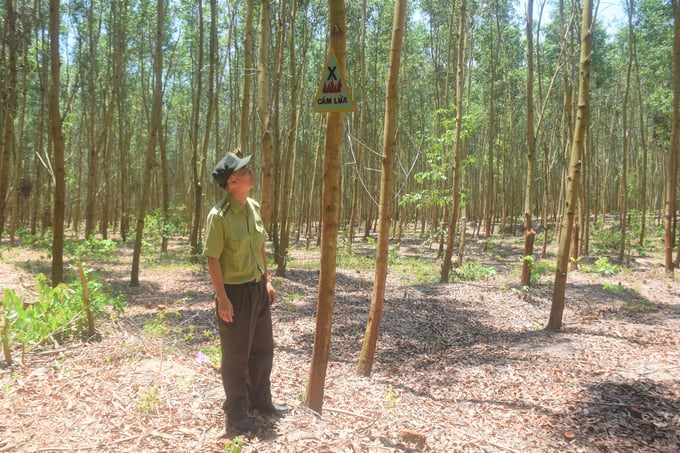
Fire prevention in large areas of timber forests is very strict. Photo: V.D.T.
In the period of 2023 - 2025, according to the plan, Song Kon Forestry Company Limited will exploit small timber plantations and replant large timber forests with an area of nearly 287 ha. In which, 2023, large timber forests will be exploited and replanted in Dak Mang and Bok Toi communes (Hoai An district) with more than 89 ha, this area is expected to be exploited in 2032; in 2024 continue to implement the program in 2 communes Dak Mang, Bok Toi (Hoai An district) and Vinh Quang commune (Vinh Thanh district) with an area of 117.5 ha, this area is expected to be exploited in 2033. In 2025, this unit plans to plant 80 ha in Dak Mang commune, this area is expected to be exploited in 2034.
According to Mr Nguyen Ngoc Dao, Chairman of Song Kon Forestry Company Limited, the average cost of large timber plantations is over VND 72.6 million/ha. Large investment capital in afforestation is the Company's production and business capital and loan capital.
According to the Forest Protection and Development Project for the period of 2021 - 2025 of Song Kon Forestry Co., Ltd., the unit was approved by Binh Dinh Provincial People's Committee to borrow VND 10.8 billion from a commercial bank to plant large timber forests. However, the interest rate of commercial banks was too high, so the Company faced many difficulties.
“Another difficulty in the development of large timber forests is forest tree varieties. Large timber forests are mainly planted with Acacia hybrids, but recently, many areas of Acacia forests have appeared with mass wilt disease, without any remedy. There aren't suitable tree species to develop large timber forests”, shared Mr Nguyen Ngoc Dao.
Looking at the large timber-oriented plantation that is now 5 years old of Song Kon Forestry Co., Ltd. planted in Binh Tan commune (Tay Son district, Binh Dinh), we see that the trees in the forest are growing strong, healthy, and full, promising to grow even faster in the future.
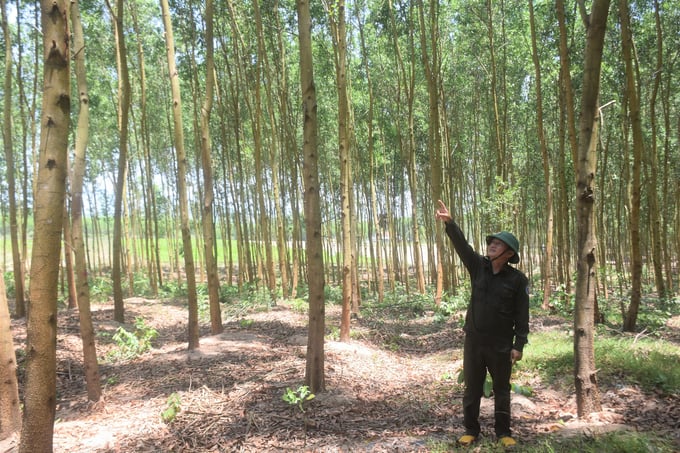
Mr Dang Hong Hoang, Head of Binh Tan Forest Protection and Management Station (Tay Son District, Binh Dinh) in the large timber forest of Song Kon Forestry Company Limited. Photo: V.D.T.
Mr Dang Hong Hoang, Head of Binh Tan Forest Protection and Management Station (under Song Kon Forestry Co., Ltd.) said: This forest was planted by the Company in 2017. Previously, each ha of forest was planted with 3,260 acacia trees. By 2023, when the trees are 5 years old, the station has thinned out and started growing large timber forests.
Leading us to visit the forest, Mr Hoang continued the story: "When thinning, the company's employees use red paint to mark the trees that will be left to grow into large timber forests, each ha only leaves 400 trees, the rest is exploited. The 400 acacia trees selected to be left were arranged at a very even density, then interplanted between the hybrid acacia trees with 400 ironwood/ha.
“After thinning, the forest is well photosynthesized, so from the 5th year onwards, the forest trees will thrive. Now, to plant large timber forests, people only plant from 1,600 - 2,000 trees/ha, and some places only plant from 1,100 - 1,600 trees/ha. The planting is sparse so forest trees have better growth power in the first 5 years. Large timber forests also do not plant acacia anymore but only grow tissue-transplanted acacia trees. The tissue culture glue variety has fewer pests and diseases and has better resistance to storms", said Mr Dang Hong Hoang.
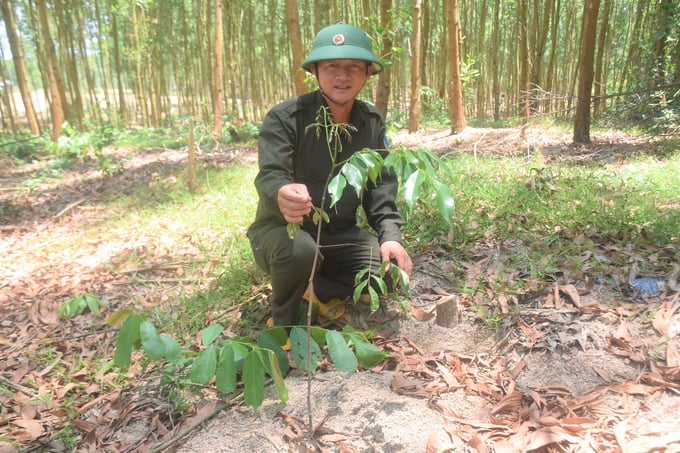
Currently, large acacia forests are intercropped with ironwood. Photo: V.D.T.
According to the analysis of Mr Nguyen Ngoc Dao, Chairman of Song Kon Forestry Co., Ltd., in the 3rd year of planting, trees begin to give biomass, and in the following years, the growth rate was higher and higher. If afforestation continues in the 6th year, the yield will reach 120 tons/ha, in the 7th year the productivity will increase to 160 tons/ha, in the 8th year the productivity will continue to increase up to 180 tons/ha.
"Newly planted forests in the 3rd and 4th years have been exploited, the productivity is very low, only about 60 tons/ha. On average, planted forest timber costs VND 1.2 million/ton, only VND 72 million/ha of forest. After deducting the exploitation, transportation, digging holes for replanting, buying seedlings,..., forest growers can no longer hold on to much money.
If the forest is kept for up to 8 years, then the yield will reach 180 tons/ha, the size of forest trees is also qualified for processing, so the selling price also increases by about 30%, and the growers get double benefits. In order for afforestation to become an economic sector, it is necessary to start with large timber plantations", said Mr Dao.
Financial problems are one of the major obstacles in the development of large timber forests in Binh Dinh today. Because the harvesting cycle for large timber plantations must last for 8-10 years, forest growers need a lot of capital to both invest in forests and cover living expenses for their families.
Meanwhile, most of the forest growers are forest dwellers who have a difficult life, so they do not have the conditions to raise large timber forests. If anyone can afford to raise large timber forests, they will worry about trees planted on the land for many years, the Central region is often windy and stormy, so the risk of being struck down by storms is very high.

From the 5th year onwards, thanks to thinning, the forest photosynthesizes well and the trees grow very quickly. Photo: V.D.T.
However, according to the experience of Song Kon Forestry Co., Ltd., Acacia hybrid has a very strong vitality, especially for tissue transplants. Even though they were knocked down by the wind and fell close to the ground, in the future, even if no one erected them, they would stand up by themselves, because the tree is light-oriented.
“Five years ago, a large area of timber forest planted by the Company in Dak Mang commune (Hoai An district) in 2015 was hit by a storm and it knocked down hundreds of ha of trees, and many trees were broken. At that time, the Company assessed the damage as at least 30%. But now, this storm-hit forest has stood up straight on its own, the acacia trees are only 8 years old and have already fallen once, yet the yield is estimated at 170 tons/ha”, Mr. Nguyen Ngoc Dao, Chairman of Song Kon Forestry Co., Ltd shared.
Translated by Hoang Duy
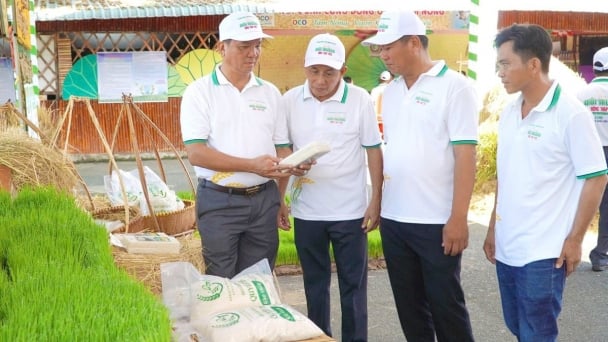
(VAN) Dong Thap has launched a meeting in response to the Action Month for the Environment under the theme 'Live Green - Join Hands for a Green Economy' at Tram Chim National Park.
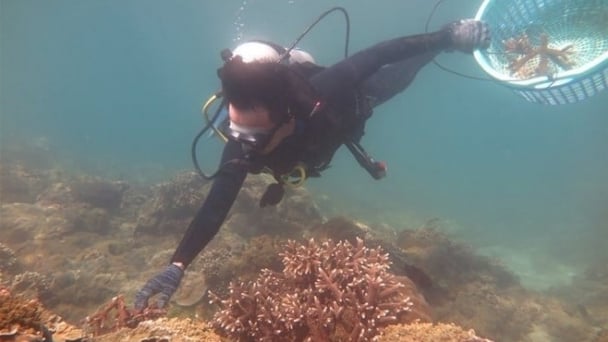
(VAN) The ocean has the capacity to absorb millions of tons of carbon, provided that mangrove forests, coral reefs, and biodiversity are protected.
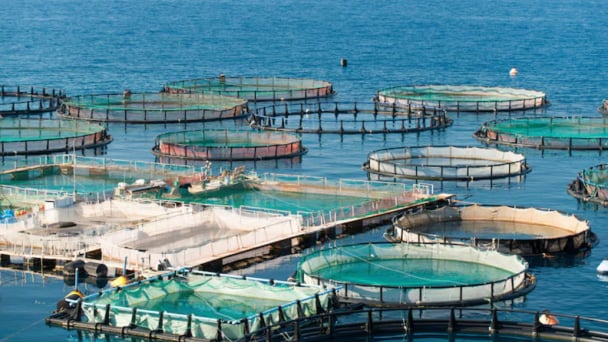
(VAN) Technology is redrawing the map of Vietnamese aquaculture: more modern, greener, and more sustainable.

(VAN) Novel process harnesses machine learning to reveal groups of genes that determine how efficiently plants use nitrogen.

(VAN) Several scientists and farmers are experimenting with soil treatment in some key durian-growing regions such as Cai Lay (Tien Giang), Dak Song, Gia Nghia, and Dak R’lap (Dak Nong).
/2025/05/25/4127-3-073637_820.jpg)
(VAN) Thanks to the promotion from an FAO-implemented project, vegetable production in greenhouses in Moc Chau has seen strong development, from 1.5 hectares in 2021 to nearly 50 hectares in 2024.

(VAN) FAO has recently supported USD 140,000 to implement the project 'Risk mitigation human-animal interface risks through disease control initiatives in pig farming.'